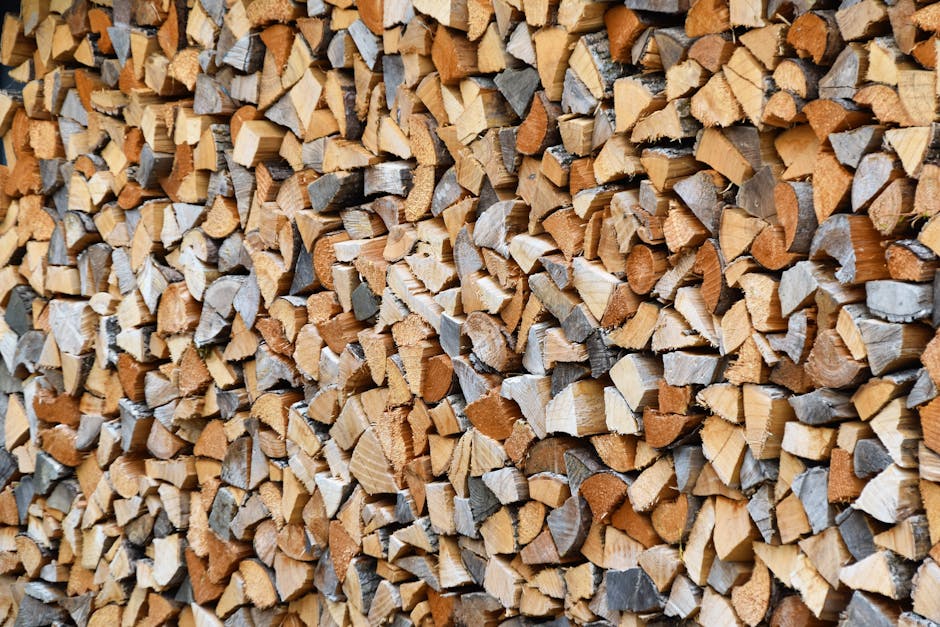Firewood What You Need to Know
Firewood has been a staple energy source for centuries, providing heat and comfort to households worldwide. While modern advancements have introduced new heating technologies, the demand for firewood persists due to its affordability, sustainability, and cultural significance. Making informed choices when it comes to firewood requires understanding its types, proper preparation, and storage methods.

Whether you're using firewood for a cozy fireplace or an outdoor bonfire, knowing how to select and handle it efficiently is crucial for both safety and environmental impact.
Understanding Different Types of Firewood
Firewood can be broadly categorized into hardwoods and softwoods. Hardwoods, such as oak, maple, and hickory, are denser and burn longer, making them ideal for home heating. Softwoods like pine and spruce ignite quickly but burn faster, making them better suited for kindling or quick bursts of heat. Each type has its advantages depending on your specific needs.
Hardwoods are often preferred because they produce more heat per volume and leave less residue in chimneys compared to softwoods. They also take longer to season due to their density. Softwoods, on the other hand, are easier to split and season faster, but they may produce more creosote buildup in chimneys if not burned correctly.
When selecting firewood, consider its moisture content. Seasoned wood with a moisture level below 20% burns more efficiently and produces less smoke. Using a moisture meter can help ensure you’re choosing properly dried wood.
The Importance of Seasoning Firewood
Seasoning firewood is the process of drying it out to reduce moisture content. Freshly cut wood, also known as green wood, contains high levels of water that make it difficult to burn and cause excessive smoke. Properly seasoned wood provides cleaner combustion and higher energy output.
The seasoning process typically takes six months to a year, depending on the type of wood and local climate conditions. To speed up drying, stack the wood in a single row with ample air circulation and exposure to sunlight. Covering the top of the stack with a tarp while leaving the sides open can protect it from rain while promoting airflow.
A simple test to check if firewood is seasoned is by knocking two pieces together. Seasoned wood produces a sharp sound, while green wood emits a dull thud.
Storing Firewood Properly
Proper storage is essential to maintain the quality of your firewood. Storing it outdoors in a well-ventilated area away from your home’s walls minimizes the risk of pest infestations and mold growth. A raised platform or pallet can prevent moisture from seeping in from the ground.
Avoid stacking firewood inside your home or garage unless it’s for short-term use. This practice reduces the likelihood of introducing insects or rodents indoors. Always keep a few days’ worth of wood near your fireplace or stove for convenience but replenish it regularly from your main storage pile.
- Stack firewood at least 20 feet away from structures to prevent pests.
- Use racks or pallets to elevate the pile off the ground.
- Cover only the top of the stack with a tarp for weather protection.
Sustainability Considerations
Sourcing firewood responsibly is vital for environmental conservation. Overharvesting can lead to deforestation and disrupt local ecosystems. When possible, purchase firewood from certified suppliers who follow sustainable forestry practices.
Avoid transporting firewood across regions as this can spread invasive pests like emerald ash borer or Asian longhorned beetle. These pests pose significant threats to forests and local biodiversity. Instead, source wood locally to support sustainable practices while minimizing ecological risks.
If you gather your own firewood, adhere to local regulations regarding cutting permissions and tree removal limits. Focus on harvesting dead or fallen trees rather than cutting down healthy ones.
Fireplace Safety Tips
Using firewood safely goes beyond proper selection and storage, it also involves maintaining your fireplace or wood-burning stove. A clean chimney reduces the risk of creosote buildup that could cause chimney fires. Schedule annual inspections by certified professionals to ensure safe operation.
Never burn treated wood or construction scraps as they release toxic chemicals when burned. Stick with natural firewood that has been seasoned properly for optimal safety and efficiency.
Keep flammable materials away from your fireplace area and always use a screen or door to contain sparks. Installing carbon monoxide detectors in your home adds an extra layer of safety when using any form of combustion heating.
Economic Benefits of Using Firewood
Firewood remains one of the most cost-effective heating options for many households. Compared to fossil fuels like propane or natural gas, seasoned wood can be significantly cheaper, especially if sourced locally or gathered independently.
The initial investment in a wood-burning stove or efficient fireplace may seem substantial but pays off in reduced heating costs over time. Many governments offer incentives or tax credits for using renewable energy sources like biomass heating systems.
If you’re looking for ways to save money during colder months while reducing reliance on non-renewable resources, incorporating firewood into your heating strategy could be an excellent solution.
Understanding firewood's nuances (from types and seasoning processes to proper storage methods) is essential for making informed decisions that benefit both you and the environment. Hardwoods provide long-lasting heat suitable for home heating systems, while softwoods offer quick ignition ideal for kindling tasks. Seasoning ensures cleaner burns with higher energy efficiency while proper storage maintains quality over time.
Sourcing responsibly harvested firewood supports sustainability efforts while reducing ecological risks associated with invasive pests or deforestation. By adhering to safety measures such as chimney maintenance and avoiding treated woods, you can enjoy both economic savings and peace of mind when using firewood as an energy source during cold seasons.
